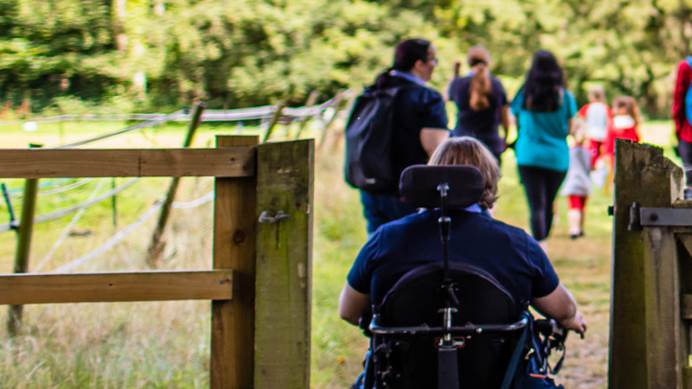Safe online guiding
How to keep all our members safe in virtual meetings and when using digital devices
Whether you’re running a virtual unit meeting or using digital devices in person, it’s important to take steps to keep everyone safe.
This guidance is part of our digital safeguarding procedure.
Not everyone has the same access to the internet, and some people might have trouble getting online.
When considering virtual guiding or using devices in in-person meetings, think about what devices girls might be able to use, and whether Wi-Fi is available. It’s a good idea to check in with parents and carers as part of your planning.
Using digital devices
Whether you’re using a personal device to carry out your volunteering role, or equipment provided by Girlguiding, you must:
- Agree to use it safely, securely and responsibly.
You must not:
- Share, download, print, or distribute anything illegal, defamatory, obscene, indecent, pornographic, offensive, discriminatory, sexual, or violent.
- Use the equipment to cause harassment, alarm, or distress to others.
You also need to follow our managing information procedure to reduce the risks when using digital devices and protect our members.
Digital devices in your unit meetings
If you’re using devices as part of your in-person unit meetings, make sure young members won’t be able to view anything illegal or inappropriate.
- Supervise young members in an age-appropriate way when they’re online.
- Use safety and security settings, like parental controls, when setting up. These will help protect children from inappropriate content online. You can find guides for setting up parental controls on lots of different devices on the internet matters website.
You might not always want girls to use their phones and devices during meetings or other activities. It can help manage your unit and give girls a fuller experience if you limit when and where they use them. Talk with your young members about:
- What your guidelines on using mobiles should be -they’ll probably be different for unit meetings, compared to camps and other events, and can be agreed at unit level.
- Keeping any devices they bring with them safe and secure.
- Using their phones or other devices appropriately and responsibly - make sure they know to ask permission from their friends before taking or sharing photos or videos. Young leaders and other young volunteers need to follow the same rules as adult volunteers. They must only take or share images if photo permissions on GO allow this.
- Using social media responsibly and safely, within the community guidelines and terms and conditions of the platform. Remember to talk about any age restrictions too.
Virtual meetings
What do I need to do to keep everyone safe?
All the things you do in your unit to keep girls safe still apply when we guide online:
- You must have appropriate ratios of adult volunteersto young members throughout the call.
- At least 1 adult volunteer must have completed, or be working towards, the becoming a leader section of the leader development programme.
- At least 1 leader (including assistant leaders and leaders-in-training) must have completed level 3 of a safe space training, and have a current valid disclosure check.
- Any volunteer who doesn't need a disclosure check for their role, or hasn’t completed one yet, must be supervised by someone with a current valid disclosure check.
- Avoid 1-to-1 contact online between volunteers and young members. Find out more about messaging with young members in our digital safeguarding procedure.
You also need to complete a virtual meeting checklist and risk assessment (PDF) before running online meetings.
Get parent or carer permission
Online or virtual guiding is different to a regular unit meeting, so you’ll need to get written permission from parents or carers for girls to join in.
- Download the virtual meeting parent/carer consent form (PDF)
- Download the virtual meeting parent/carer consent form (Word)
These forms can cover multiple online meetings - you don't need a signed form for each meeting.
They’ve been designed to be filled out remotely, so you don't need to meet with parents for their signatures and they can email the completed forms back to you. All the instructions are included on the forms.
Always contact parents and carers to talk through your plans for online meetings. Explain how you’ll be meeting, how often and what they need to do to support their child’s guiding experience.
If a girl doesn’t meet the age requirements for the platform you want to use, they can join using an account set up by their parent or carer. The parent or carer should stay nearby during the meeting, so they can ask for help if they need it. As the account holder, the parent or carer should also be the one to log into the meeting and out again at the end.
Running safe meetings online
There’s lots to think about when it comes to virtual or online meetings.
When planning or setting up the meetings:
- Decide on a platform that will work best for you and your unit. Check the terms and conditions, including age requirements, as many are changing their features regularly.
- Set up your account so that each meeting has a unique passcode, and attendees are put into a virtual waiting room before joining.
- Follow our guidance on visitors joining your meetings. This applies online as well as in-person.
- Make sure the room you’re in is suitable for young members to see.
- If you’re joining a virtual meeting from home and have other people around, make sure they’re dressed appropriately and know how to behave when you’re talking to young members.
You’ll need to let young members and their parents or carers know:
- Young members should try to avoid making calls from their bedrooms. If they can’t avoid it, then suggest they blur the background, use a virtual background, or only show a plain background in their room.
- Young members under 14 need to have a parent or carer with them when they join a video chat. Their parent or carer can stay nearby in the same room or can stay present during the meeting. Young members over 14 should have an adult nearby so that they can ask for help if they need it.
- If a young member doesn’t want to have their camera on for the meeting, ask that they turn their camera on at the start and the end of the meeting. This is so you can make sure that their parent or carer is aware and is staying in the same room or nearby so that they can ask for help if they need it.
Before you get started you should also work with the girls in your unit to decide on some rules – like treating each other with respect and making sure everyone has a chance to speak. If you have a lot of girls on a call, ask them to think about how they can join in the conversation without interrupting each other. Could they do a hand signal or raise their hand virtually if they have something to say, or hold up a sign with their name on?
Some platforms allow direct messaging or group chats. Make sure your unit knows to behave kindly to each other. Explain how they can raise any worries with a leader. You might be able to turn off some features – make sure you let the girls know which are available.
Breakout groups
You might want to break into smaller groups during online meetings, just like you would in your regular face-to-face meetings.
In each smaller breakout group, you'll need to have at least 1 adult present. They must be a volunteer who holds at least a unit helper role.
For example, you can have 1 leader with 3 young members. But you must not have 1 adult with 1 young person alone, in any activity. If this happens, leave the breakout group and tell the unit leader.
If your unit doesn’t have enough volunteers to run breakout groups, you could try:
- Joining with another unit so you have enough leaders when a specific activity needs breakout sessions.
- Pausing your meeting, let the girls go away and do the activity in their home. Then come back together to discuss and show each other what they’ve done. This can also help on platforms like Zoom if you have a time limit on the call – you can hang up the call and then start a new one once the girls have done their activity.




